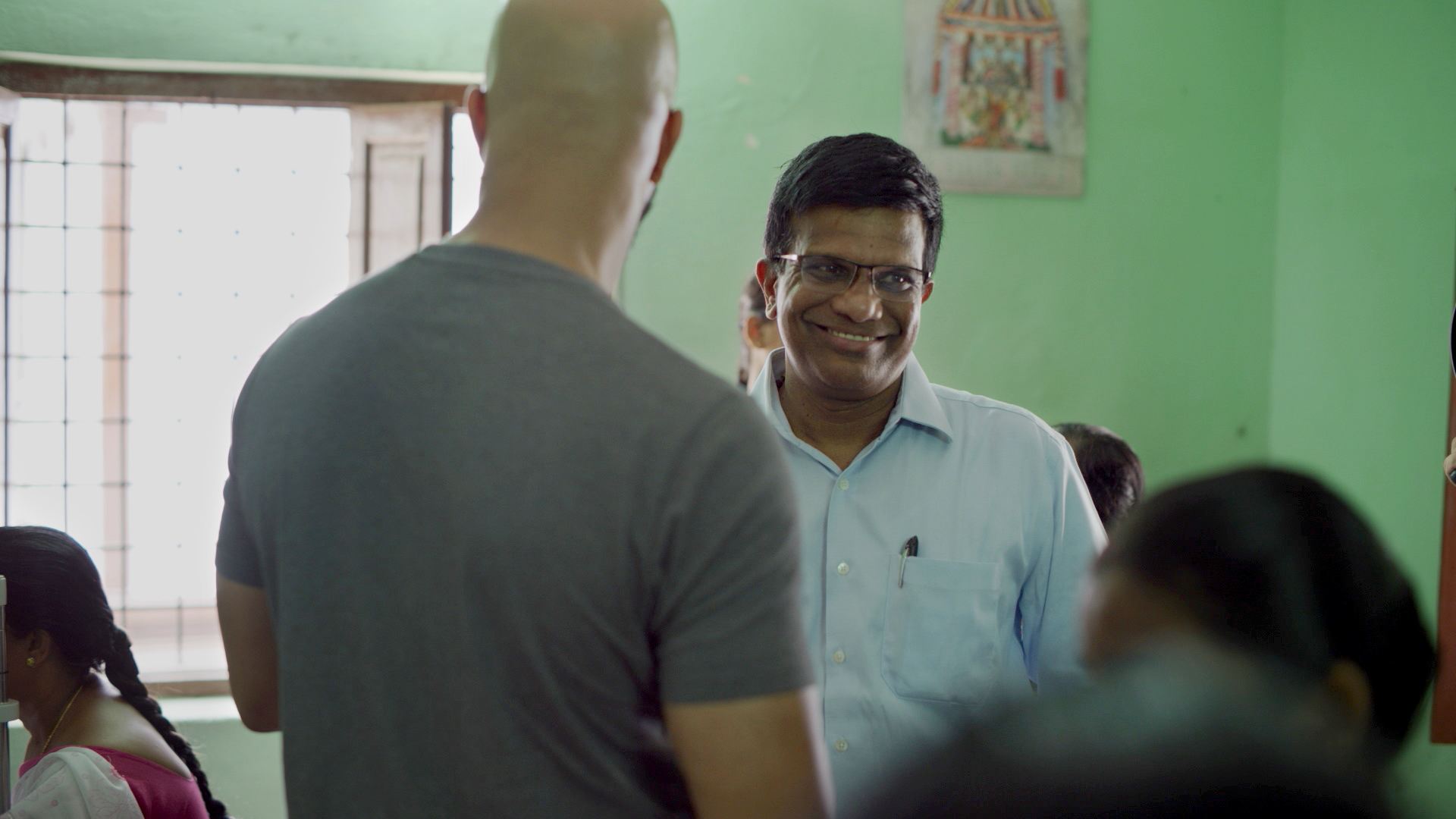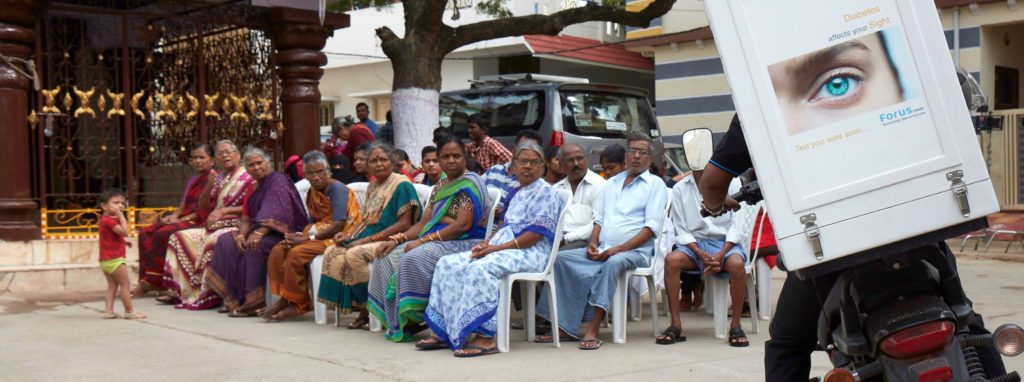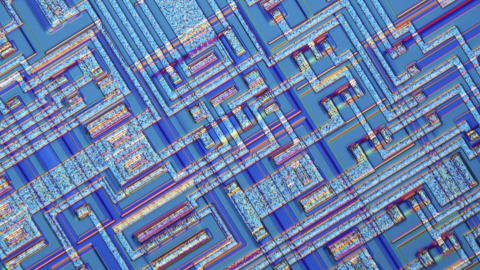Forus Health uses AI to help eradicate preventable blindness
A couple of years ago, K Chandrasekhar came across a news release from Microsoft about a newly established consortium whose mission was to apply artificial intelligence to help eliminate avoidable blindness and increase access to eyecare services.
Chandrasekhar, who had established his technology company Forus Health in India with the same goal of eradicating preventable blindness, immediately reached out to Microsoft to inquire about a collaboration. He knew that AI could help his company’s products – affordable and portable eye-scanning devices – make a difference on a much larger scale.
Today, the two companies’ work together in detecting retinal diseases such as diabetic retinopathy is featured in a new TV commercial.
The debut of the commercial, part of a campaign that highlights the work of Microsoft customers and features artist Common, is certainly exciting for Chandrasekhar, but not as exciting as the potential impact of the work itself.
“AI can complement the doctors and assist them in making a faster diagnosis,” he said.
That faster diagnosis is significant in countries like India, where diabetes is on the rise. With that rise comes an increase in cases of diabetic retinopathy, a condition where high blood sugar damages the eye and can eventually lead to blindness.
When Chandrasekhar founded Forus Health in 2010, the biggest bottleneck in detecting diabetic retinopathy was that the devices used to do so were expensive and could only be found in hospitals.
“We felt it was important that we make a product that has the ability to reach a larger section of people,” he said.
That product is the 3nethra classic, which can be attached to the back of a moped and transported to remote locations, where it scans hundreds of villagers in public health centers every day. The device operator needs only minimal training to complete the scans, which are sent through the cloud to be reviewed by an ophthalmologist.
Microsoft AI improves the process in a couple of critical ways: validating that images are high quality enough and flagging potential signs of diabetic retinopathy disease. This assistive technology saves time – there is only one ophthalmologist for every 70,000 people in India – and increases the likelihood that an issue will be spotted early enough for intervention.
“The doctor is able to spend time on patients who need care immediately,” Chandrasekhar said. “We have to live with the number of doctors we have, but the doctor can focus his time on the patients who really need it.”

A collaboration in caring
Before he started Forus Health, Chandrasekhar had no background in medical devices or health care. He was working for Philips when he happened to attend a lecture in 2005 and learned about the problem of preventable blindness. It resonated with him on both an emotional and societal impact level.
Chandrasekhar shared an example of an individual who begins to work at the age of 12 because of family poverty, then works until the age of 65.
“At a time when he should probably relax and have a peaceful time, he loses his vision and becomes a liability for his family,” he said. “It’s overwhelming to understand because it is not only a financial problem, but also an emotional one. The bridge to solving this kind of problem can be using technology to reach a larger portion of people.”
One thing that drew Chandrasekhar to Microsoft is the company’s focus on doing good with its technology.
“Over the past few years, there has been a lot of focus in Microsoft on empathy,” he said. “That very well connects with our mission. It’s not just business; it’s not just technology. It’s the empathy and the emotional attachment to solve the problem.”
Big problems, shared solutions
Tackling global challenges has been the focus of many health data consortiums that Microsoft is enabling. The Microsoft Intelligent Network for Eyecare (MINE) – the initiative that Chandrasekhar read about – is now part of the Microsoft AI Network for Healthcare, which also includes consortiums focused on cardiology and pathology.
For all three, Microsoft’s aim is to play a supporting role to help doctors and researchers find ways to improve health care using AI and machine learning.
“The health care providers are the experts,” said Prashant Gupta, Program Director in Azure Global Engineering. “We are the enabler. We are empowering these health care consortiums to build new things that will help with the last mile.”
In the Forus Health project, that “last mile” started by ensuring image quality. When members of the consortium began doing research on what was needed in the eyecare space, Forus Health was already taking the 3nethra classic to villages to scan hundreds of villagers in a day. But because the images were being captured by minimally trained technicians in areas open to sunlight, close to 20% of the images were not high quality enough to be used for diagnostic purposes.
“If you have bad images, the whole process is crude and wasteful,” Gupta said. “So we realized that before we start to understand disease markers, we have to solve the image quality problem.”
Now, an image quality algorithm immediately alerts the technician when an image needs to be retaken.
The same thought process applies to the cardiology and pathology consortiums. The goal is to see what problems exist, then find ways to use technology to help solve them.
“Once you have that larger shared goal, when you have partners coming together, it’s not just about your own efficiency and goals; it’s more about social impact,” Gupta said.
And the highest level of social impact comes through collaboration, both within the consortiums themselves and when working with organizations such as Forus Health who take that technology out into the world.
Chandrasekhar said he is eager to see what comes next.
“Even though it’s early, the impact in the next five to 10 years can be phenomenal,” he said. “I appreciated that we were seen as an equal partner by Microsoft, not just a small company. It gave us a lot of satisfaction that we are respected for what we are doing.”
Top image: Forus Health’s 3nethra classic is an eye-scanning device that can be attached to the back of a moped and transported to remote locations. Photo by Microsoft.
Leah Culler edits Microsoft’s AI for Business and Technology blog.









